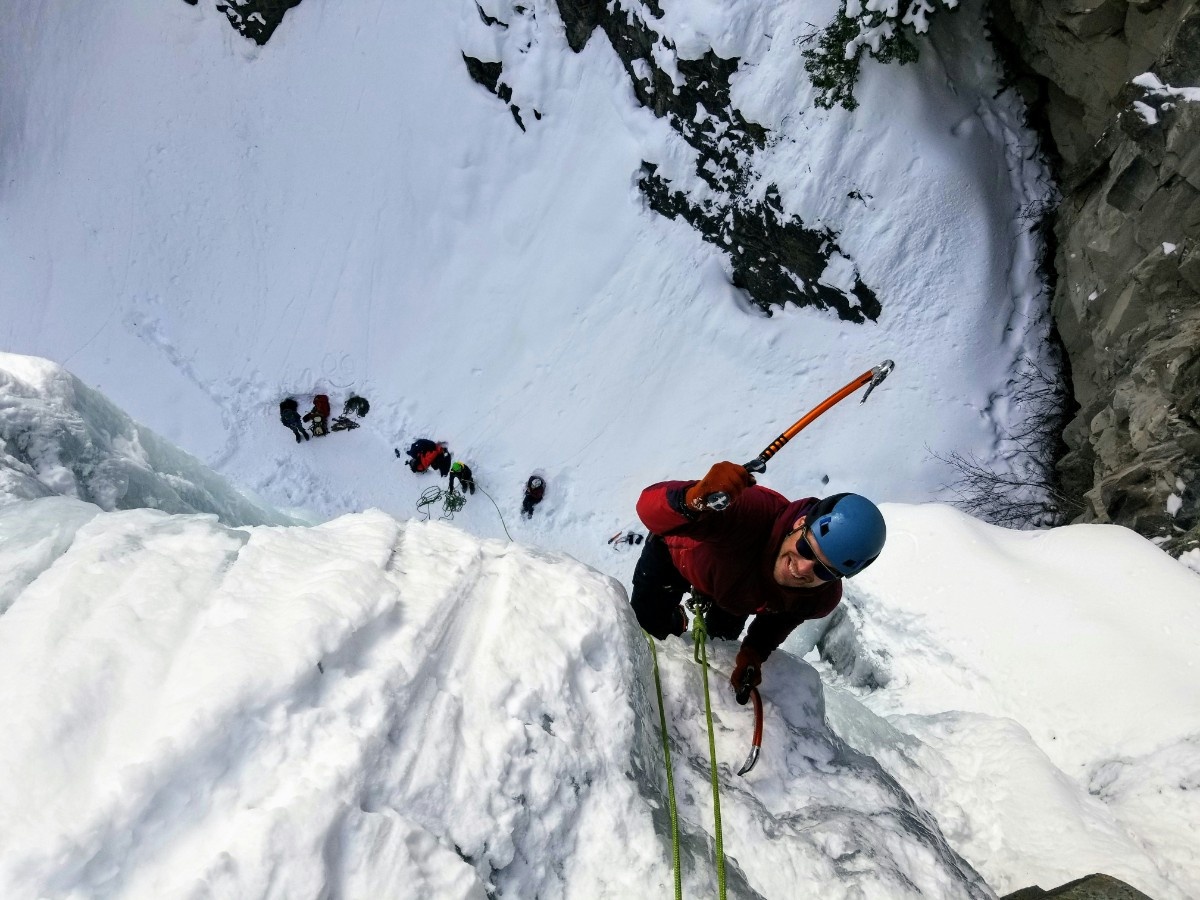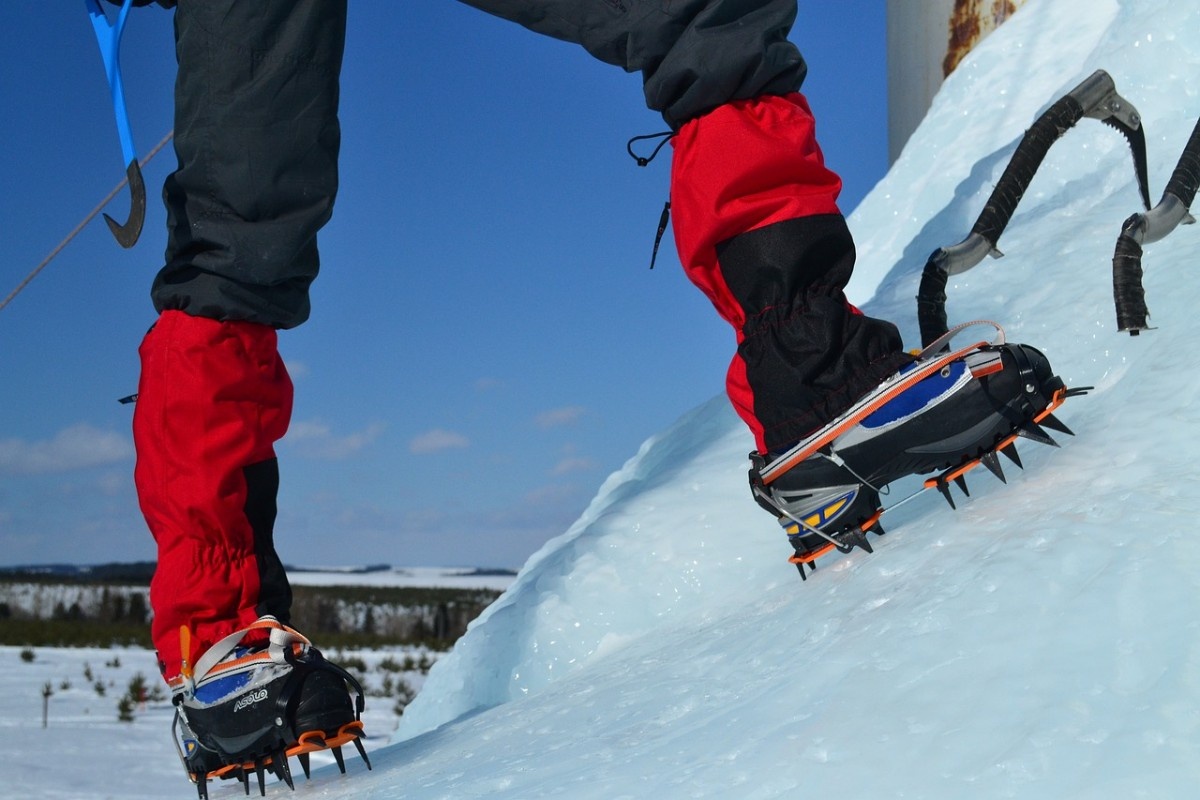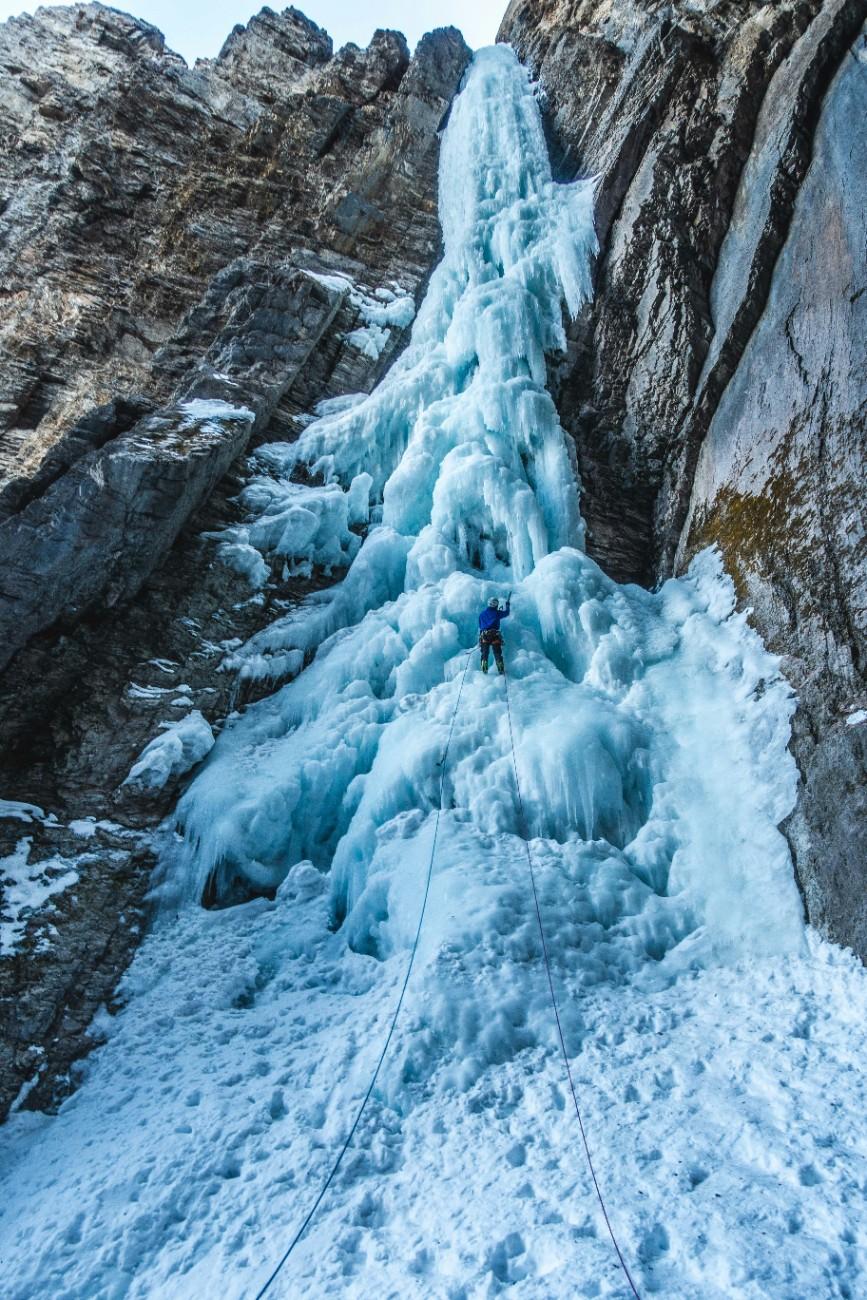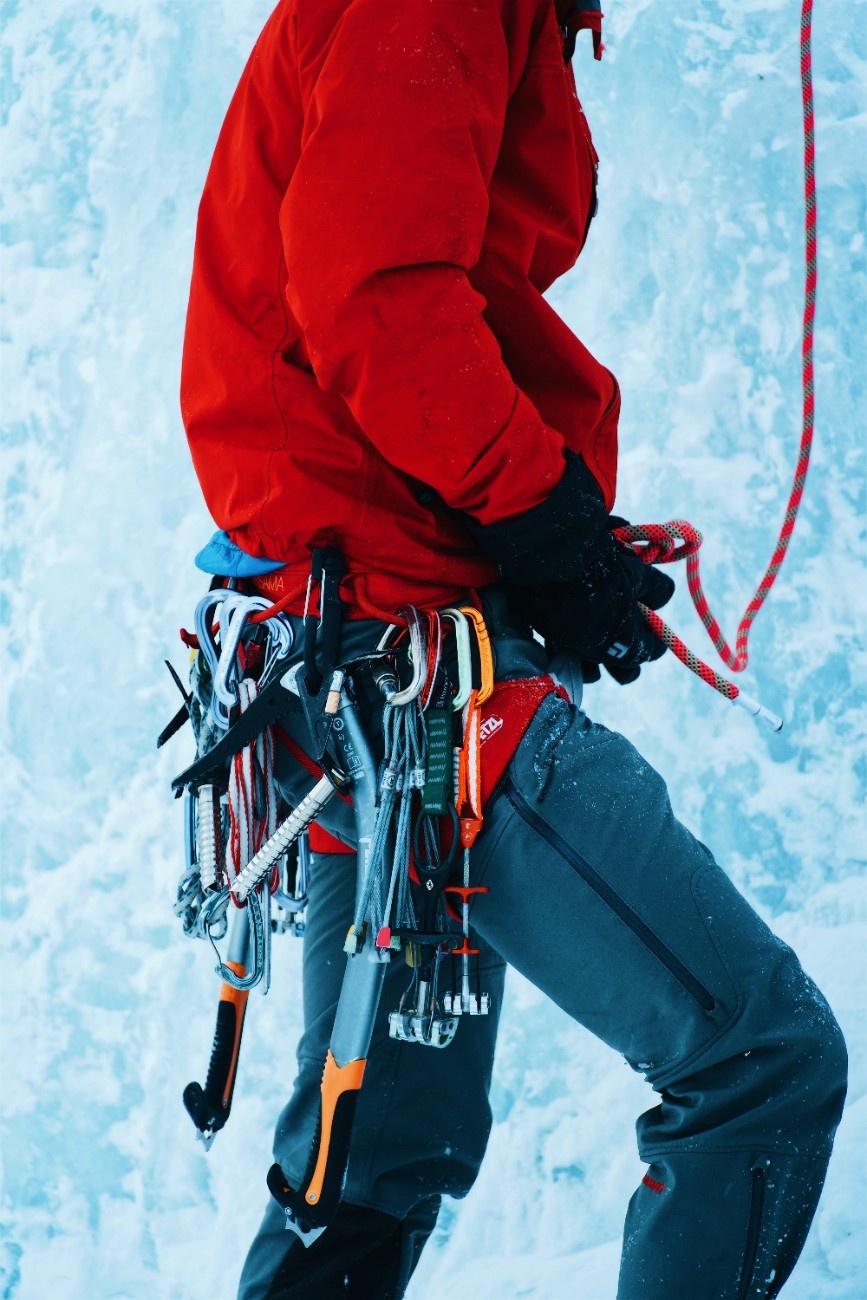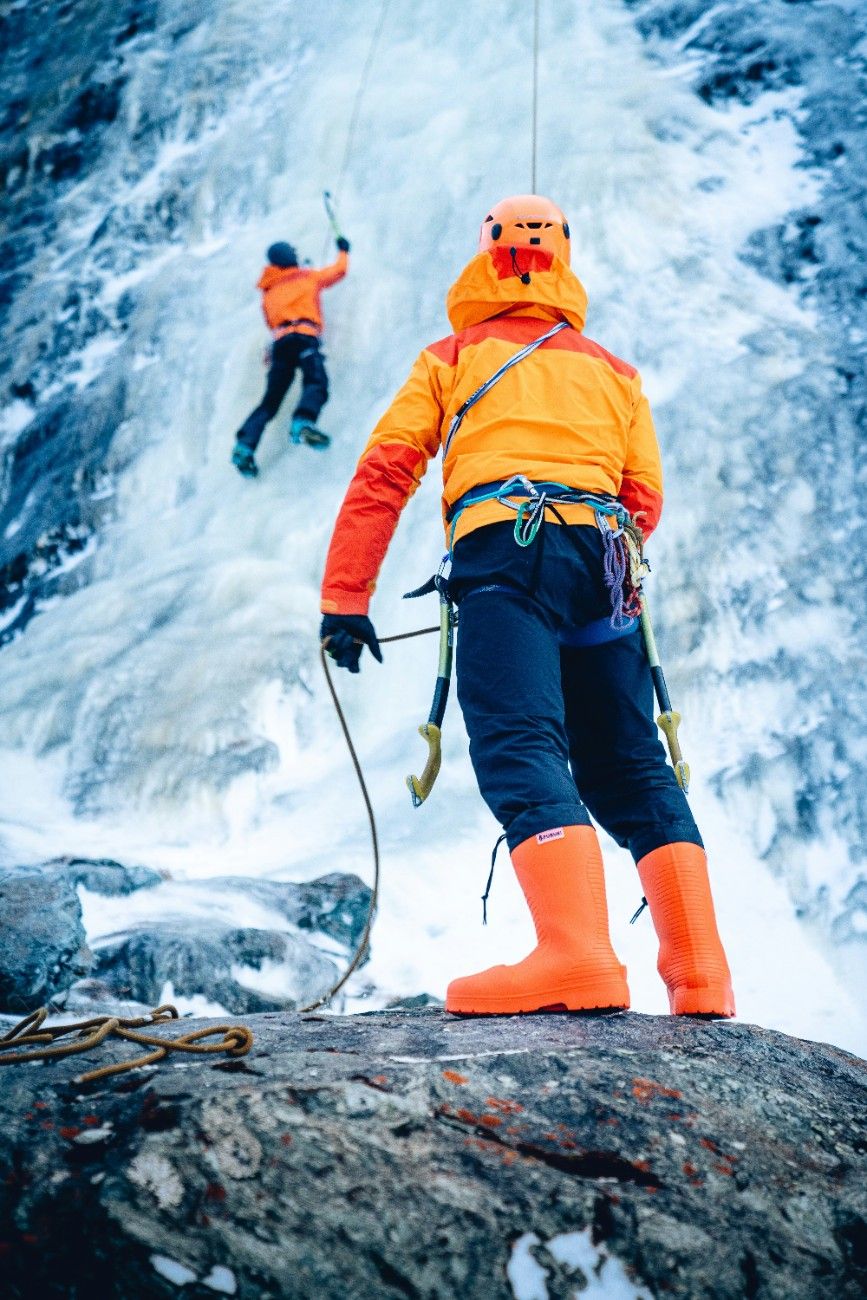Introduction to Ice Climbing
The Origins and Evolution of Ice Climbing
Ice climbing is an exhilarating and challenging winter sport that involves scaling frozen waterfalls, icefalls, and glaciers using specialised equipment and techniques. Unlike rock climbing, where climbers rely on handholds and footholds, ice climbing requires the use of ice axes and crampons to ascend the vertical and often overhanging walls of ice.
The origins of ice climbing can be traced back to the late 19th century when mountaineers began exploring and climbing in the Alps and other high-altitude regions. As the sport evolved, climbers developed specialised equipment and techniques to tackle increasingly difficult and technical ice formations.
The Allure of Ice Climbing
Ice climbing offers a unique and thrilling experience that combines physical and mental challenges with breathtaking natural beauty. Climbers must navigate ever-changing conditions, from delicate crystalline formations to massive, overhanging icefalls. The ephemeral nature of ice adds an extra layer of excitement and unpredictability to the sport.
The sound of ice axes biting into the frozen surface, the crunch of crampons on ice, and the stunning vistas of frozen landscapes create an unforgettable sensory experience for ice climbers. The sport demands a combination of strength, technique, and mental fortitude, making it a true test of skill and endurance.
The Global Ice Climbing Community
Today, ice climbing has become a popular winter pursuit for adventurers seeking a unique and thrilling experience. From the frozen waterfalls of the Canadian Rockies to the towering icefalls of the Himalayas, ice climbers are constantly pushing the boundaries of what is possible on ice.
The global ice climbing community is a tight-knit group of passionate individuals who share a love for the sport and the natural wonders it allows them to explore. Climbers from around the world gather at renowned ice climbing destinations, exchanging knowledge, experiences, and forming lasting friendships forged on the ice.
The Future of Ice Climbing
As the sport continues to evolve, new techniques, equipment, and climbing areas are constantly being explored. The impact of climate change on glaciers and ice formations has also become a concern for the ice climbing community, prompting discussions about sustainability and conservation efforts.
Despite these challenges, the spirit of adventure and the allure of conquering frozen landscapes continue to draw climbers to the sport. Ice climbing remains a testament to human perseverance and the enduring desire to explore the boundaries of what is possible in the natural world.
Gear and Equipment
Proper gear and equipment are essential for safe and successful ice climbing. Having the right tools and knowing how to use them correctly can mean the difference between an exhilarating adventure and a potentially dangerous situation. Here are some of the key items that every ice climber should have:
Ice Climbing Tools
Ice Axes: These are the primary tools used for climbing and self-arresting (stopping a fall). Ice axes come in various shapes and sizes, with curved or straight shafts and different pick configurations designed for specific ice conditions.
Crampons: Crampons are metal spikes that attach to the climber's boots, providing traction on ice and snow. They come in different styles, such as rigid or semi-rigid, and are designed for specific types of climbing.
Ropes and Protection
Harness: A climbing harness is worn around the waist and legs to securely attach the climber to the rope and belay system.
Ropes: Dynamic climbing ropes are used for lead climbing and belaying. They are designed to absorb the impact of a fall and stretch to dissipate the force.
Carabiners: These are metal loops with a spring-loaded gate, used for connecting the rope to the climber's harness, anchors, and other equipment.
Belay Devices: Belay devices are used to control the rope and provide friction for belaying and rappelling.
Safety and Comfort
Helmets: Climbing helmets protect the head from falling ice, rocks, and other debris.
Clothing: Proper layering with moisture-wicking base layers, insulating mid-layers, and waterproof outer layers is essential for staying warm and dry in cold and wet conditions.
Specialised Ice Climbing Gear
Ice Screws: Ice screws are used to create anchors in ice for belaying and rappelling. They come in various lengths and designs to accommodate different ice conditions.
Snow Anchors: Snow anchors, such as pickets or flukes, are used to create anchors in snow or firn (compacted snow) for belaying and rappelling.
Abalakov Devices: Abalakov devices, also known as V-thread tools, are used to create anchors in ice or snow by weaving a loop of cord or webbing through the ice or snow.
Ice Clippers: Ice clippers are specialised carabiners designed to attach the rope to ice screws or other anchors, minimising the risk of the rope becoming detached.
Proper care, maintenance, and inspection of all gear and equipment are crucial for ensuring safety and longevity. Climbers should also receive proper training and instruction on the use of each piece of equipment before attempting any ice climbing activities.
Ice Climbing Techniques
Ice climbing requires a unique set of techniques and skills that are different from rock climbing. Mastering these techniques is essential for efficient, secure, and enjoyable ice climbing. Here are some of the essential techniques that every ice climber should master, along with subsections for each:
Footwork Techniques
Front-Pointing: This involves kicking the front points of the crampons into the ice to create secure footholds. Proper body positioning and weight transfer are crucial for effective front-pointing.
Flat-Footing: Used on lower-angled ice or when traversing, flat-footing involves placing the entire crampon flat against the ice for maximum surface contact and stability.
Torquing: Torquing involves twisting the foot and crampon into the ice to create a secure foothold, often used on steeper or overhanging sections.
Swinging and Clearing Techniques
Straight-Arm Swing: This is the basic ice axe swing, where the climber uses a straight-arm motion to strike the ice and create a handhold or remove loose ice.
High Swing: The high swing is used to clear ice above the climber's head or to create high handholds on steeper sections.
Low Swing: The low swing is used to clear ice below the climber's feet or to create low handholds for better body positioning.
Torquing: Similar to the footwork technique, torquing involves twisting the ice axe in the ice to create a secure handhold. This technique is often used on steeper or overhanging sections of ice.
Mixed Climbing Techniques
Dry Tooling: Dry tooling is a technique used when climbing on mixed terrain, where climbers use their ice axes to hook onto small edges and cracks in the rock.
Smearing: Smearing involves using the rubber soles of the climbing shoes to gain friction on small rock features or smears of ice, allowing for upward progress on mixed terrain.
Anchoring and Belaying Techniques
Ice Screw Anchors: Climbers must learn how to properly place and equalise ice screws for setting up belay stations and rappel anchors on ice.
Snow Anchors: Techniques for creating secure anchors in snow or firn, such as using pickets, flukes, or buried objects.
Belaying and Rappelling: Climbers must be proficient in belaying and rappelling techniques specific to ice climbing, such as using specialised belay devices and managing ropes on icy terrain.
Mastering these techniques requires practice, patience, and proper instruction from experienced climbers or guides. It's also essential to continuously refine and adapt these techniques based on the specific ice conditions and climbing objectives.
Ice Climbing Grades and Ratings
Like rock climbing, ice climbing routes are graded based on their difficulty and technical challenges. The most widely used grading system for ice climbing is the Water Ice (WI) scale, which ranges from WI1 (easiest) to WI7 (most difficult). In addition to the WI grades, there are other rating systems and factors that provide climbers with a more comprehensive understanding of a route's overall difficulty and potential risks.
The Water Ice (WI) Grading System
WI1: Low-angle ice with minimal technical difficulty, suitable for beginners.
WI2: Steeper ice with some bulges or short vertical sections, requiring basic ice climbing techniques.
WI3: Sustained vertical or slightly overhanging ice with occasional technical sections, demanding good footwork and axe placements.
WI4: Sustained vertical or overhanging ice with technical sections and mixed climbing, requiring advanced techniques and endurance.
WI5: Extremely overhanging or vertical ice with continuous technical sections and mixed climbing, presenting a high level of difficulty.
WI6: Extremely overhanging or vertical ice with continuous technical sections, mixed climbing, and high-level difficulty, pushing the limits of what is possible.
WI7: The most challenging and demanding ice climbs, often involving overhanging or roof sections and extreme technical difficulty, reserved for elite climbers.
Additional Ratings and Factors
Length: The overall length of a climb can significantly impact its difficulty, as longer routes demand greater endurance and commitment.
Commitment: The level of commitment refers to the seriousness of a climb, taking into account factors such as remoteness, descent difficulty, and the potential for objective hazards.
Mixed Climbing: Some ice climbs may involve sections of mixed climbing, where climbers must navigate both ice and rock terrain. These sections are often graded using a separate mixed climbing scale (M) or the rock climbing Yosemite Decimal System (YDS).
Alpine Grades: For longer, multi-pitch ice climbs or alpine routes, additional grading systems may be used to account for factors such as route-finding, exposure, and overall commitment.
Aspect and Conditions: The aspect (direction the ice formation faces) and current conditions can greatly influence the difficulty of a climb. Ice quality, temperature, and sun exposure can all affect the stability and technical nature of the ice.
By understanding these grades and ratings, climbers can better assess their skill level and choose appropriate routes that align with their experience and objectives. It's important to note that these grades are subjective and can vary based on individual perception and changing conditions.
Winter Ascents and Mountaineering
While ice climbing often focuses on specific frozen waterfalls or icefalls, winter ascents and mountaineering involve climbing and traversing larger mountain ranges and peaks during the winter months. This type of climbing presents unique challenges and requires additional skills and preparation beyond those needed for ice climbing alone.
Expedition Planning and Logistics
Route Selection: Choosing an appropriate route for a winter ascent requires careful consideration of factors such as weather patterns, avalanche risks, technical difficulty, and logistical challenges.
Acclimatisation Strategies: Proper acclimatisation is crucial for high-altitude winter ascents to prevent altitude sickness and ensure optimal performance. Climbers may need to factor in additional time and stages for gradual acclimatisation.
Gear and Equipment: Winter mountaineering expeditions require specialised gear and equipment, including high-quality insulated tents, stoves, and sleeping systems designed for extreme cold temperatures.
Food and Fuel Planning: Careful planning is required to ensure adequate food and fuel supplies for the duration of the expedition, taking into account the increased caloric demands of winter climbing.
Winter Camping and Survival Skills
Tent and Shelter Setup: Climbers must be proficient in setting up tents and shelters in snow, using techniques such as digging snow platforms, anchoring systems, and constructing snow walls for protection.
Snow Melting and Water Management: Melting snow for drinking water and cooking is a crucial skill, requiring efficient stove management and proper hydration strategies.
Cold Weather Survival: Understanding and managing the risks of cold weather, such as frostbite, hypothermia, and snow blindness, is essential for winter survival.
Navigation and Route Finding
Map Reading and Compass Skills: Navigating in winter conditions can be challenging due to whiteout conditions, changing terrain, and limited visibility. Proficiency in map reading and compass use is crucial for route finding.
GPS and Digital Navigation: While not a substitute for traditional navigation skills, GPS devices and digital mapping tools can be valuable aids in winter mountaineering, particularly for tracking progress and identifying potential hazards.
Avalanche Safety and Rescue
Avalanche Risk Assessment: Climbers must be trained in avalanche risk assessment, including evaluating terrain, snow conditions, and weather patterns to minimise the risk of being caught in an avalanche.
Avalanche Rescue Techniques: In the event of an avalanche, climbers must be proficient in rescue techniques, such as using transceivers, probes, and shovels to locate and extract buried victims.
Crevasse Rescue: Glaciated terrain often presents the risk of hidden crevasses. Climbers must be skilled in crevasse rescue techniques, including setting up hauling systems and extracting fallen climbers.
Winter ascents and mountaineering expeditions require a high level of skill, experience, and preparation. Climbers should seek proper training and guidance from experienced mountaineers and guides before attempting such challenging endeavours.
Ice Climbing Areas and Destinations
Ice climbing can be enjoyed in various locations around the world, from frozen waterfalls in local parks to remote and challenging icefalls in high-altitude mountain ranges. Each destination offers unique experiences, challenges, and breathtaking natural beauty. Here are some of the most popular and renowned ice climbing destinations, along with subsections highlighting their key features and attractions.
The Canadian Rockies
Icefields Parkway: This scenic highway in Alberta offers access to numerous classic ice climbs, including the iconic Weeping Wall and Polar Circus.
Banff National Park: Home to the famous Cascade Falls and other challenging routes, Banff is a mecca for ice climbers from around the world.
Kananaskis Country: Located just outside of Calgary, Kananaskis Country boasts a variety of ice climbing opportunities, from beginner-friendly routes to advanced multi-pitch climbs.
New England (USA)
Frankenstein Cliff (New Hampshire): This iconic ice climbing destination in Crawford Notch features a variety of routes, including the famous Frankenstein and Dracula climbs.
Smugglers' Notch (Vermont): Known for its steep and challenging climbs, Smugglers' Notch is a popular destination for experienced ice climbers.
Adirondacks (New York): The Adirondack Mountains offer a range of ice climbing opportunities, from roadside climbs to remote backcountry adventures.
Ouray Ice Park (Colorado, USA)
Man-made Ice Climbing Park: The Ouray Ice Park is a unique man-made ice climbing park featuring over 200 ice climbing routes of varying difficulty levels.
Guided Clinics and Festivals: The park hosts guided clinics and annual ice climbing festivals, attracting climbers from around the world.
Rjukan (Norway)
Rjukanfossen Waterfall: The towering Rjukanfossen waterfall is the centerpiece of Rjukan's ice climbing scene, offering challenging and scenic climbs.
Variety of Climbs: In addition to the main waterfall, Rjukan offers a range of other ice climbing opportunities, from roadside routes to multi-pitch adventures.
Hyalite Canyon (Montana, USA)
Beginner-Friendly Routes: Hyalite Canyon is known for its beginner-friendly ice climbs, making it an excellent destination for those new to the sport.
Advanced Multi-Pitch Climbs: More experienced climbers can also find challenging multi-pitch routes and mixed climbing opportunities in the canyon.
Chamonix (France)
Classic Alpine Ice Climbs: Chamonix is a renowned mountaineering and ice climbing destination, offering classic alpine ice climbs like the Goulotte Lafaille and the Goulotte Fontaine.
Mixed Climbing Challenges: The area also presents opportunities for cutting-edge mixed climbing, combining ice and rock sections.
Himalayan Ranges (Nepal, Pakistan, India)
Remote and Challenging Climbs: The Himalayan ranges, including areas like the Khumbu Valley in Nepal and the Karakoram Range in Pakistan, offer some of the most challenging and remote ice climbing and mountaineering opportunities in the world.
High-Altitude Adventures: Climbers can experience the thrill of scaling towering icefalls and glaciers at high altitudes, surrounded by the majestic Himalayan peaks.
These destinations represent just a small sample of the incredible ice climbing opportunities available worldwide. As the sport continues to grow, new areas and routes are constantly being explored and developed, offering endless possibilities for adventure and personal growth.
Safety and Risk Management
Ice climbing and winter ascents are inherently dangerous activities that require proper risk management and safety measures. Climbers must be aware of the potential hazards and take necessary precautions to mitigate risks. Here are some essential safety considerations for ice climbers, along with subsections highlighting key aspects of risk management.
Training and Experience
Proper Instruction: Seeking proper training and instruction from qualified guides or instructors is crucial for developing the necessary skills and knowledge for safe ice climbing.
Gradual Progression: Climbers should gradually progress to more challenging routes as their skills and experience improve, rather than attempting routes beyond their current abilities.
Continuous Learning: Ice climbing techniques, equipment, and safety practices are constantly evolving, and climbers should stay up-to-date with the latest developments and best practices.
Weather and Conditions
Monitoring Weather: Monitoring weather conditions, including temperature changes, precipitation, and wind patterns, is essential for assessing the stability and safety of ice formations.
Ice Quality Assessment: Climbers must be able to evaluate the quality and stability of ice formations, recognising potential hazards such as hollow or rotten ice, and adjusting their plans accordingly.
Avalanche Awareness: In areas with avalanche risks, climbers must be trained in avalanche safety, understand terrain evaluation, and be prepared to perform avalanche rescue techniques if necessary.
Emergency Preparedness
Rescue and Evacuation Plans: Climbers should have a plan for self-rescue or evacuation in case of emergencies, including carrying appropriate equipment and knowing how to use it.
First Aid and Survival Skills: Knowledge of first aid and survival skills, such as treating injuries, building emergency shelters, and signalling for help, can be life-saving in remote or extreme environments.
Communication Devices: Carrying reliable communication devices, such as two-way radios or satellite phones, can facilitate emergency response and rescue operations.
Partner Checks and Communication
Partner Checks: Climbing with a partner and regularly checking each other's equipment, knots, and anchors is crucial for identifying and mitigating potential safety issues.
Clear Communication: Establishing clear communication protocols and hand signals can help climbers effectively communicate during the climb and in emergency situations.
Situational Awareness: Maintaining situational awareness and being mindful of potential hazards, such as falling ice or rock, is essential for both climbers' safety.
Equipment and Maintenance
Proper Equipment Selection: Using well-maintained and appropriate equipment for the specific climbing conditions is essential for safety. Climbers should follow manufacturer guidelines for proper use and care.
Regular Inspections: Regularly inspecting and retiring worn or damaged gear is crucial to prevent equipment failure and potential accidents.
Backup Systems: Implementing backup systems, such as redundant anchors or backup ropes, can provide an additional layer of safety in case of equipment failure or unexpected situations.
By embracing a culture of safety, continuously learning and improving, and making informed decisions based on risk assessment, ice climbers can mitigate many of the inherent risks associated with this exhilarating sport.
Environmental Considerations and Ethics
As with any outdoor activity, ice climbing and winter ascents have an impact on the environment. Responsible climbers should strive to minimise their impact and follow ethical practices to preserve these natural wonders for future generations. By embracing environmental stewardship and ethical climbing principles, the ice climbing community can contribute to the long-term sustainability of the sport and the protection of the fragile ecosystems in which it takes place.
Leave No Trace Principles
Waste Management: Climbers should pack out all trash, including food waste and human waste, to prevent contamination of the environment.
Campsite Impact Minimisation: When camping, climbers should choose durable surfaces, disperse use, and minimise campfire impacts to protect vegetation and soil.
Trail Etiquette: Staying on established trails and avoiding shortcutting can prevent erosion and damage to fragile alpine environments.
Respecting Wildlife
Wildlife Disturbance: Ice climbing and mountaineering areas are often home to various wildlife species. Climbers should be mindful of their presence and avoid disturbing or harassing animals, especially during sensitive times like breeding or nesting seasons.
Noise Pollution: Excessive noise from human activities can disrupt wildlife behaviour and should be minimised, especially in remote or sensitive areas.
Habitat Protection: Climbers should avoid damaging or altering natural habitats, such as trampling vegetation or disturbing nesting sites.
Sustainable Practices
Low-Impact Transportation: Carpooling, using public transportation, or choosing fuel-efficient vehicles can reduce the carbon footprint associated with accessing climbing areas.
Renewable Energy Sources: When possible, climbers should consider using renewable energy sources, such as solar or wind power, for charging devices or powering camp equipment.
Conservation Efforts: Supporting local conservation organisations and initiatives can help protect and preserve the natural areas where ice climbing takes place.
Ethical Climbing
Local Regulations and Permits: Climbers should respect local regulations and obtain necessary permits for climbing in certain areas, ensuring compliance with rules and guidelines.
Bolt and Fixed Anchor Etiquette: In areas where bolting or fixed anchors are permitted, climbers should follow established practices and minimise the impact on the rock or ice.
Cultural Sensitivity: Some climbing areas may hold cultural or spiritual significance for local communities. Climbers should respect these values and seek to understand and follow any specific guidelines or restrictions.
Community Engagement
Local Community Involvement: Engaging with local communities and seeking their input and guidance can foster a better understanding of the area's cultural and environmental significance.
Stewardship and Advocacy: Climbers can contribute to the preservation of climbing areas by participating in stewardship activities, such as trail maintenance or clean-up efforts, and advocating for responsible climbing practices.
Education and Outreach: Sharing knowledge and promoting environmental awareness within the climbing community can help cultivate a culture of respect and responsibility towards the natural environments where ice climbing takes place.
By embracing these environmental considerations and ethical principles, ice climbers can play a vital role in preserving the beauty and integrity of the landscapes they explore, ensuring that future generations can continue to experience the thrill and wonder of ice climbing and winter ascents.
Preparing for Winter Ascents
To prepare physically and mentally for winter ascents, here are some key tips:
Physical Preparation
Build cardiovascular endurance through activities like running, cycling, or hiking with a weighted pack. Winter ascents are strenuous and require good stamina.
Incorporate strength training, especially for the legs and core, to handle the extra weight of winter gear and the demands of climbing with crampons and ice axes.
Go on practice hikes on rough, mountainous terrain to get accustomed to the conditions you'll face on a winter ascent. Build up to longer distances and greater elevation gains.
Work on developing balance and agility, as you'll need these skills for moving efficiently on snow and ice with crampons.
Mental Preparation
Cultivate a "robust mindset" and be prepared for discomfort. Embrace the concept of "Type 2 fun" - activities that are challenging but rewarding.
Practice mindfulness and being present in the moment. This can help you stay focused and make better decisions in challenging situations.
Develop strategies to cope with potential emotional challenges, such as anger, frustration, or the urge to give up too quickly. These emotions can be amplified in remote environments.
Understand and accept the risks involved in winter ascents, and be prepared to turn back if conditions become unsafe.
Other Preparation
Take an avalanche safety course and learn how to assess avalanche terrain and snow conditions. Check avalanche forecasts as part of your planning.
Learn essential winter climbing techniques, such as using ice axes, crampons, and setting up anchors and belays on snow and ice.
Gather the proper gear and clothing for winter conditions, including insulating layers, waterproof shells, and appropriate footwear.
Practice with your winter gear beforehand to ensure you're comfortable and familiar with its use.
By combining physical training, mental preparation, skill development, and proper planning, you can increase your chances of a safe and successful winter ascent.
Related Articles

Let us know you agree to cookies
We use marketing, analytical and functional cookies as well as similar technologies to give you the best experience. Third parties, including social media platforms, often place tracking cookies on our site to show you personalised adverts outside of our website.
We store your cookie preferences for two years and you can edit your preferences via ‘manage cookies’ or through the cookie policy at the bottom of every page. For more information, please see our cookie policy.
